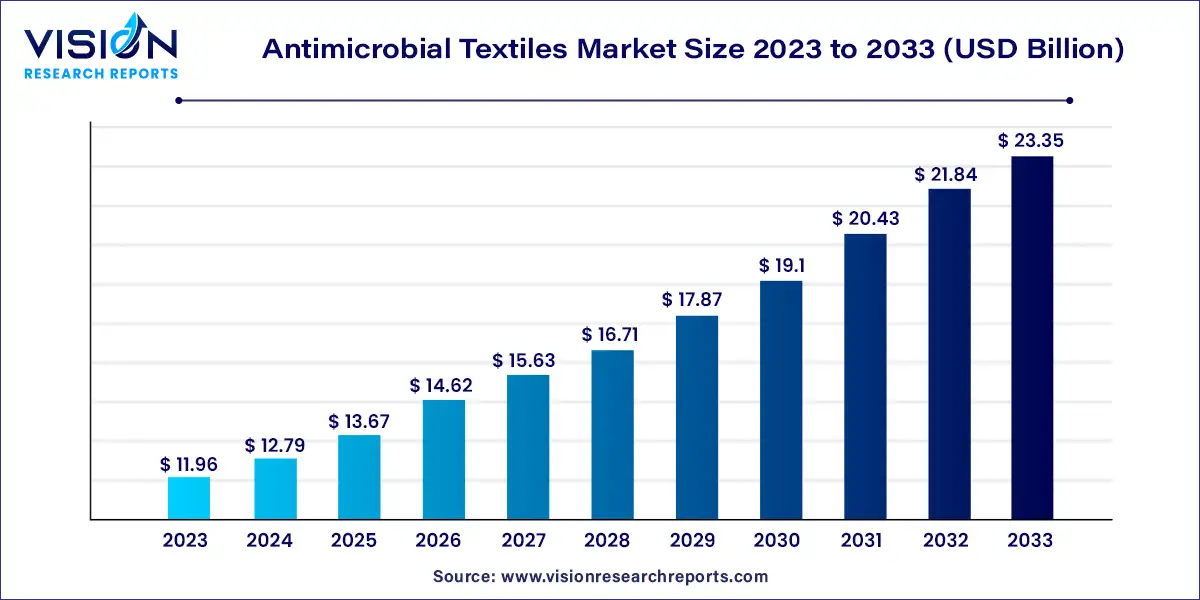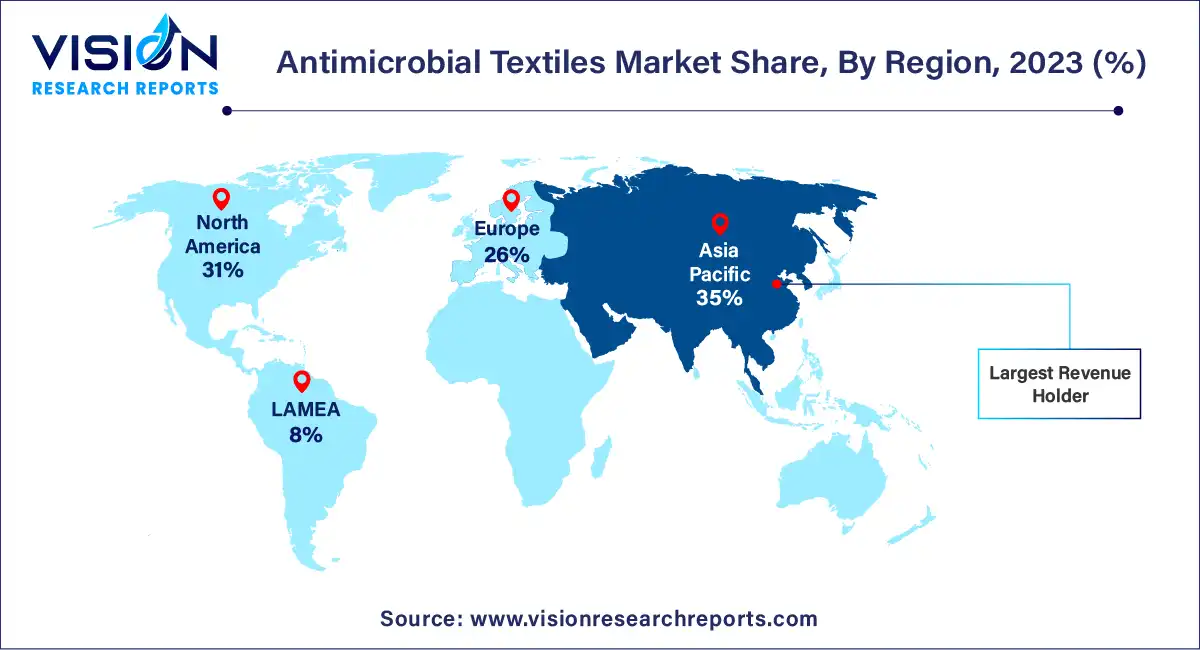The global antimicrobial textiles market size was estimated at around USD 11.96 billion in 2023 and it is projected to hit around USD 23.35 billion by 2033, growing at a CAGR of 6.92% from 2024 to 2033.

The growth of the antimicrobial textiles market is fueled by several key factors. Firstly, increasing awareness and concerns about hygiene and infection control, particularly in healthcare settings, are driving the demand for antimicrobial textiles. Additionally, advancements in textile technology have enabled the integration of antimicrobial agents into fabrics, enhancing their effectiveness in inhibiting microbial growth. Moreover, the rising demand for antimicrobial properties in apparel, home textiles, and other sectors further contributes to market growth. Regulatory initiatives and standards focusing on antimicrobial efficacy and safety also play a significant role in shaping market dynamics. Overall, the antimicrobial textiles market is experiencing steady growth, driven by a combination of factors including heightened awareness, technological advancements, and regulatory support.
The largest segment in 2023 was synthetic organic compounds, which contributed to over 48% of the global revenue share. This segment is projected to experience a growth rate of 7.02% over the forecast period. These compounds and polymers are engineered to impede the proliferation of microorganisms like bacteria, fungi, and viruses, thereby supporting textile hygiene and odor prevention. Examples of synthetic organic compounds encompass triclosan, quaternary ammonium salts, and halogenated phenols.
In 2023, the medical textile segment held a revenue share exceeding 46%, with significant anticipated growth for antimicrobial textiles throughout the forecast period. The increasing prevalence of chronic diseases and the rise in nosocomial infections globally, alongside heightened awareness of improved healthcare practices, are expected to drive demand for antimicrobial medical fabrics. Ongoing technological advancements, particularly in nanotechnology, will further bolster market expansion.
Meanwhile, the apparel segment is poised for notable growth with a significant compound annual growth rate (CAGR) projected over the forecast period. Antimicrobial textiles are increasingly integrated into activewear and sportswear due to their anti-odor properties. Moreover, growing hygiene awareness and concerns surrounding viral and bacterial infections are contributing to increased consumption of antimicrobial textiles in apparel applications.
The growth of the antimicrobial textiles market in North America is propelled by several factors, including a thriving medical textile industry, stringent industrial safety regulations, heightened awareness of personal health and hygiene, the presence of prominent companies, and a sizable consumer base. Additionally, there are untapped market opportunities in sectors such as transportation, water purification, healthcare, and sports, which are expected to drive further market expansion.

In 2023, Asia Pacific accounted for 35% of the global demand for antimicrobial textiles. This can be attributed to factors such as high population density, which increases the risk of bacterial and viral transmission, consequently driving the demand for antimicrobial textiles. Moreover, the rising disposable incomes of consumers in economies like China and India, coupled with growing awareness of hygiene in clothing, are anticipated to further bolster industry demand in the coming years.
By Active Agent
By Application
By Region
 Cross-segment Market Size and Analysis for
Mentioned Segments
Cross-segment Market Size and Analysis for
Mentioned Segments
 Additional Company Profiles (Upto 5 With No Cost)
Additional Company Profiles (Upto 5 With No Cost)
 Additional Countries (Apart From Mentioned Countries)
Additional Countries (Apart From Mentioned Countries)
 Country/Region-specific Report
Country/Region-specific Report
 Go To Market Strategy
Go To Market Strategy
 Region Specific Market Dynamics
Region Specific Market Dynamics Region Level Market Share
Region Level Market Share Import Export Analysis
Import Export Analysis Production Analysis
Production Analysis Others
Others